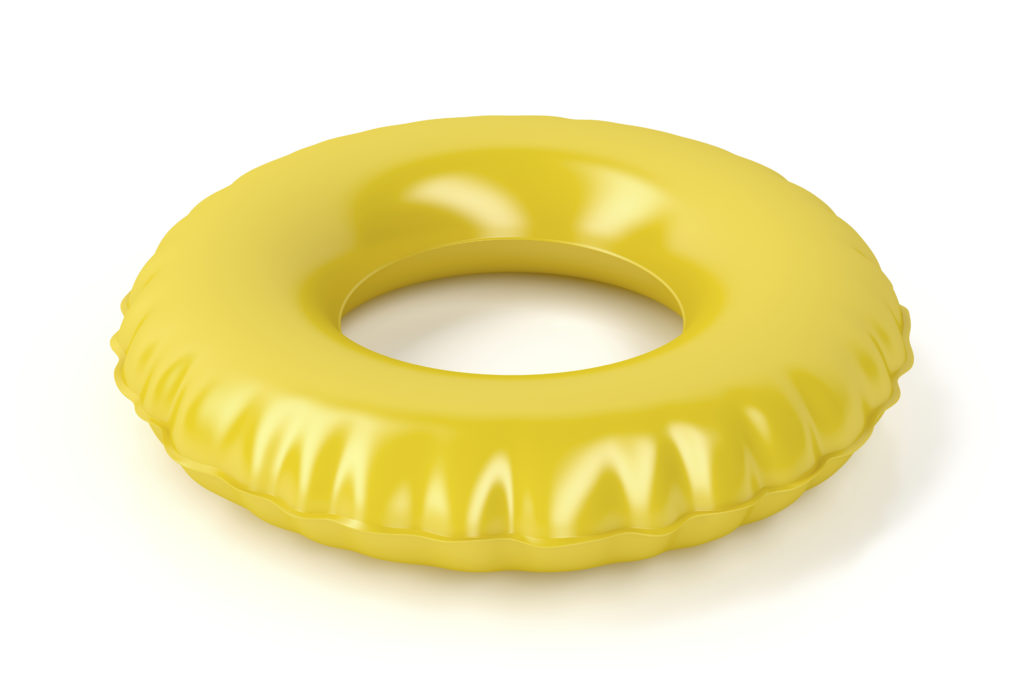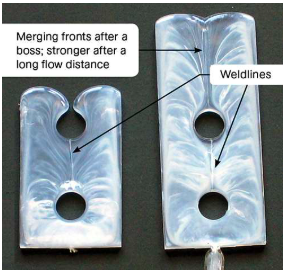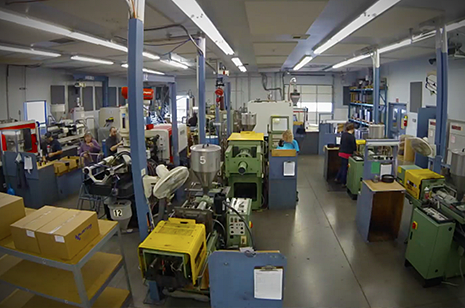- BY nwmcadmin
- POSTED IN Plastic Injection Molding
- WITH 1 COMMENTS
- PERMALINK
- STANDARD POST TYPE

What Are Knit Lines In Injection Molding?
What are knit lines?
Knit lines, weld lines, mold lines, or flow lines in injection molding are faint lines that become visible on certain plastic parts. Weld lines may appear like seams or scratches, but that is not what they are. Wavy lines are another feature of weld lines. In injection molding, it is often important to maintain consistent color throughout the part. But flow lines may be slightly off in color, and they may form close to holes, narrow areas, or other features on a part.

How do knit lines form?
When plastic resin heats to a molten state and pumps into the mold cavity, it cools quickly. The further from the gate it is, where the resin enters the mold, the cooler the resin flow becomes. If there are certain features in a part like a boss or a hole, the resin flow may split around them. When the two flows meet afterwards, a knit line can form at their meeting. This happens because the two separate flows are too cool to meld together again seamlessly. In narrower sections of a part, the resin will also cool quicker and cause more knit lines. Sometimes, knit lines form when there are two or more gates where resin injects into the mold. In injection molding, this is just one of many technical issues that manufacturers resolve when designing a mold.

Why are knit lines in injection molding a problem?
In some parts, it may be necessary to remove a weld line. Injection molding is a delicate process of making parts with just the right specifications so that they function correctly. If the resin being used is filled with an additive to strengthen it, such as glass fiber, the filling will not cross where the weld line is. This means that the weld line will not have the added strength of the filling. For some parts, a knit line is unsightly. Manufacturers often avoid these for cosmetic purposes. Knit lines are not always a problem and can be acceptable for some parts depending on their utilization. If your engineer makes you aware of a mold line that may compromise the function or image of your part, you can discuss how to remove mold lines.
Solutions for avoiding knit lines
If you are wondering how to remove mold lines, there are multiple options. Sometimes, features like bosses or other design implements that cause flow lines in injection molding are removed or moved to a less problematic location. There are even different types of plastic material that are more or less likely to form weld lines. Manufacturers adjust other specifications such as wall thickness since thicker walls will cool more slowly and allow the resin to travel further through the part without creating knit lines. In injection molding, part design is a process of adjustment and testing. A weld line might not be detrimental to your part, but if your molder knows the needs of your product they can work with you to create whatever works best.
Why Choose Rex Plastics
The engineers at Rex Plastics will work with you to design a mold and create a part that does exactly what you need it to. That’s why we’ve been in the business for over 50 years, with a 98% customer retention rate! Reach out to Rex Plastics for a quote today.



1 Comments